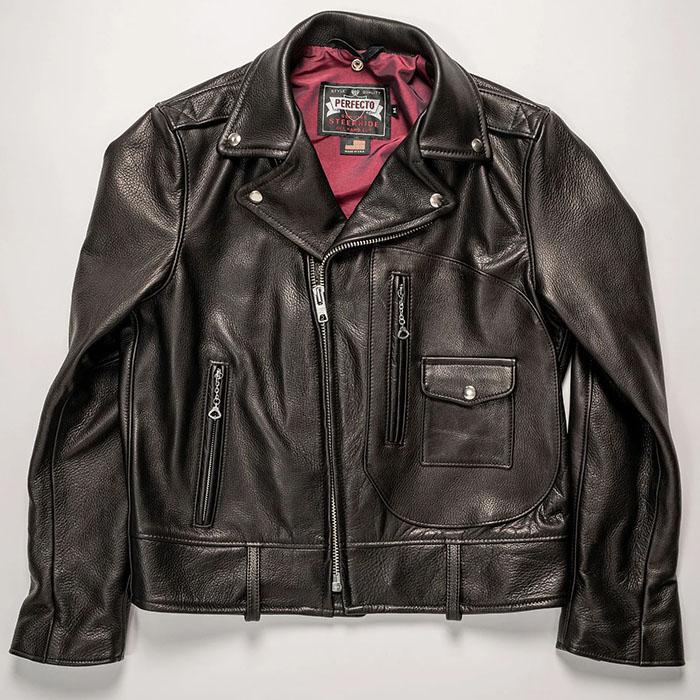Daniele Tanto
I'll Lock Up
- Messages
- 4,346
- Location
- Verona - Italia
It rains from the night, hard and ceaseless. Fifty years ago it was a disaster!
In a short pause I take a walk thinking of that water apocalypse

Tanaro Alessandria hat in light grey

Borsalino made it probably during the fifties

It belong to the several "second brand" Borsalino used to cover the medium end market

It is a nice hat well bloicked with medium finishing good for a rainy day
This day remember me those of fifty years ago when a huge flood cover half Italy
It was a very sad period, I was a teenager and I have vivid memories of the flood
When talking about the flood of November 1966 commonly means that between 3 and 4 interested the city Florence. In fact the fall of 1966 was particularly severe in different areas of the national territory, with persistent rains that started as early as October, peaked in those two days. The regions most affected were those in the North-East (Trentino-Alto Adige, Veneto, Friuli-Venezia Giulia) and the Centre (Tuscany, and more limited Emilia-Romagna and Umbria), where extensive flooding took place and numerous landslides. In the northern regions the dead were 87 in 9 provinces (6 in Bolzano, 26 in Trento, 26 in Belluno, 2 in Treviso, 3 in Venice, 5 in Vicenza, 14 Udine, Pordenone and 4 to 1 in Brescia). The displaced were over 42,000, of which 25,800 in Veneto, Friuli-Venezia Giulia in 15,800, 800 in Emilia-Romagna and over 400 in Trentino-Alto Adige. In the Po Valley and in the Veneto plain were inundated at least 137 square kilometers of land, and damages were reported in at least 209 municipalities. Only in Province of Belluno they were damaged or destroyed 4,300 buildings, 528 bridges and 1,346 streets. In Venice, November 4, 1966 high water reached the level of 194 cm, this day never again equaled. The most significant damage occurred otherwise in Tuscany, where the Ombrone River flooded the Grossetano causing thousands of displaced people. In the basin of the River Arno, in just 24 hours, several rain gauges recorded values close to or greater than 200mm of rain, usually corresponding to the media throughout the month of November. Numerous rivers went in full or overflowed, the roads was interrupted at several points by landslides.In the region they were counted 47 dead, hundreds injured and 46,000 displaced people and homeless. In Florence, the Arno flood came on the morning of November 4. The waters topped the shoulders of the riversides and covered the historic districts, reaching in some places up to 5 meters in height and forming a lake of about 40 sq km in area. In cities the dead were 17, just as many in the surrounding areas. The material damage was serious: in the end turned out damaged or destroyed 9,752 shops, 8,548 shops, 248 hotels, 600 production plants, 13,943 houses, thousands of cars. The event left more than 30,000 unemployed people. The extent of damage fù aggravated by the loss of the artistic and cultural heritage. The water and mud, loads of fuel oil collected from several citizens tanks, reached the Uffizi Gallery, the National Library, Santa Croce, the Baptistery of San Giovanni, the Archaeological museum and the Bargello, the National Library. Many masterpieces were damaged, among them the crucifix by Cimabue, the paintings of Botticelli, Paolo Uccello and Vasari, along with other 1,500 works of art and 1,300,000 volumes of the National Library.The emotional impact of the devastation flicked a general mobilization: several parts were collected funds and thousands of young people came from all over the world to make their contribution to the salvation of works of art and books, literally snatching them from the water and oily from the mud. And thanks to them was much recovered, but still, after more than forty years after the flood, are still to be restored paintings (about 140, such as the Last Supper by Giorgio Vasari), frescoes (350) and tons of vestments . Then there are the volumes of the Biblioteca Nazionale Centrale di Firenze (including old books, miscellaneous dated and modern, and theses, is expected to exceed 70,000 units) and the funds of the State Archives (documents that occupy about 2.5 kilometers of shelves) , the records of the Institute of the Innocents (1600) and those at the Opera del Duomo (there are 300), the testimonies of the Jewish Museum (15,000 volumes) and the artifacts of the Archeologico (packed on three shelves). The cost of damage caused by flooding in November 1966 (which caused a total of more than 130 dead, nearly 400 injured and at least 78,000 displaced people and the homeless) was estimated at about 1,000 billion lire, of which slightly less than half (400 billion lire) due to flooding of the Arno in Florence. Over the next ten years the state has spent 10,299.5 billion lire, the highest expenditure figure to remedy the damage caused by a geological event in Italy. From 1970 to 2012, the excise on fuel portion that relates to the flood of Florence brought into the state coffers 4.8 billion euros.
In a short pause I take a walk thinking of that water apocalypse

Tanaro Alessandria hat in light grey

Borsalino made it probably during the fifties

It belong to the several "second brand" Borsalino used to cover the medium end market

It is a nice hat well bloicked with medium finishing good for a rainy day
This day remember me those of fifty years ago when a huge flood cover half Italy
It was a very sad period, I was a teenager and I have vivid memories of the flood
When talking about the flood of November 1966 commonly means that between 3 and 4 interested the city Florence. In fact the fall of 1966 was particularly severe in different areas of the national territory, with persistent rains that started as early as October, peaked in those two days. The regions most affected were those in the North-East (Trentino-Alto Adige, Veneto, Friuli-Venezia Giulia) and the Centre (Tuscany, and more limited Emilia-Romagna and Umbria), where extensive flooding took place and numerous landslides. In the northern regions the dead were 87 in 9 provinces (6 in Bolzano, 26 in Trento, 26 in Belluno, 2 in Treviso, 3 in Venice, 5 in Vicenza, 14 Udine, Pordenone and 4 to 1 in Brescia). The displaced were over 42,000, of which 25,800 in Veneto, Friuli-Venezia Giulia in 15,800, 800 in Emilia-Romagna and over 400 in Trentino-Alto Adige. In the Po Valley and in the Veneto plain were inundated at least 137 square kilometers of land, and damages were reported in at least 209 municipalities. Only in Province of Belluno they were damaged or destroyed 4,300 buildings, 528 bridges and 1,346 streets. In Venice, November 4, 1966 high water reached the level of 194 cm, this day never again equaled. The most significant damage occurred otherwise in Tuscany, where the Ombrone River flooded the Grossetano causing thousands of displaced people. In the basin of the River Arno, in just 24 hours, several rain gauges recorded values close to or greater than 200mm of rain, usually corresponding to the media throughout the month of November. Numerous rivers went in full or overflowed, the roads was interrupted at several points by landslides.In the region they were counted 47 dead, hundreds injured and 46,000 displaced people and homeless. In Florence, the Arno flood came on the morning of November 4. The waters topped the shoulders of the riversides and covered the historic districts, reaching in some places up to 5 meters in height and forming a lake of about 40 sq km in area. In cities the dead were 17, just as many in the surrounding areas. The material damage was serious: in the end turned out damaged or destroyed 9,752 shops, 8,548 shops, 248 hotels, 600 production plants, 13,943 houses, thousands of cars. The event left more than 30,000 unemployed people. The extent of damage fù aggravated by the loss of the artistic and cultural heritage. The water and mud, loads of fuel oil collected from several citizens tanks, reached the Uffizi Gallery, the National Library, Santa Croce, the Baptistery of San Giovanni, the Archaeological museum and the Bargello, the National Library. Many masterpieces were damaged, among them the crucifix by Cimabue, the paintings of Botticelli, Paolo Uccello and Vasari, along with other 1,500 works of art and 1,300,000 volumes of the National Library.The emotional impact of the devastation flicked a general mobilization: several parts were collected funds and thousands of young people came from all over the world to make their contribution to the salvation of works of art and books, literally snatching them from the water and oily from the mud. And thanks to them was much recovered, but still, after more than forty years after the flood, are still to be restored paintings (about 140, such as the Last Supper by Giorgio Vasari), frescoes (350) and tons of vestments . Then there are the volumes of the Biblioteca Nazionale Centrale di Firenze (including old books, miscellaneous dated and modern, and theses, is expected to exceed 70,000 units) and the funds of the State Archives (documents that occupy about 2.5 kilometers of shelves) , the records of the Institute of the Innocents (1600) and those at the Opera del Duomo (there are 300), the testimonies of the Jewish Museum (15,000 volumes) and the artifacts of the Archeologico (packed on three shelves). The cost of damage caused by flooding in November 1966 (which caused a total of more than 130 dead, nearly 400 injured and at least 78,000 displaced people and the homeless) was estimated at about 1,000 billion lire, of which slightly less than half (400 billion lire) due to flooding of the Arno in Florence. Over the next ten years the state has spent 10,299.5 billion lire, the highest expenditure figure to remedy the damage caused by a geological event in Italy. From 1970 to 2012, the excise on fuel portion that relates to the flood of Florence brought into the state coffers 4.8 billion euros.








